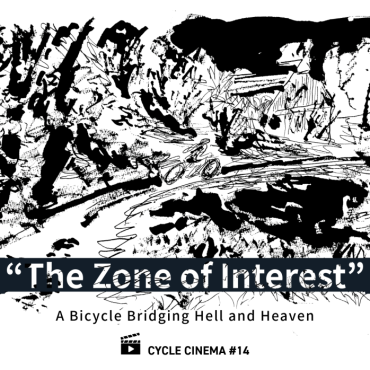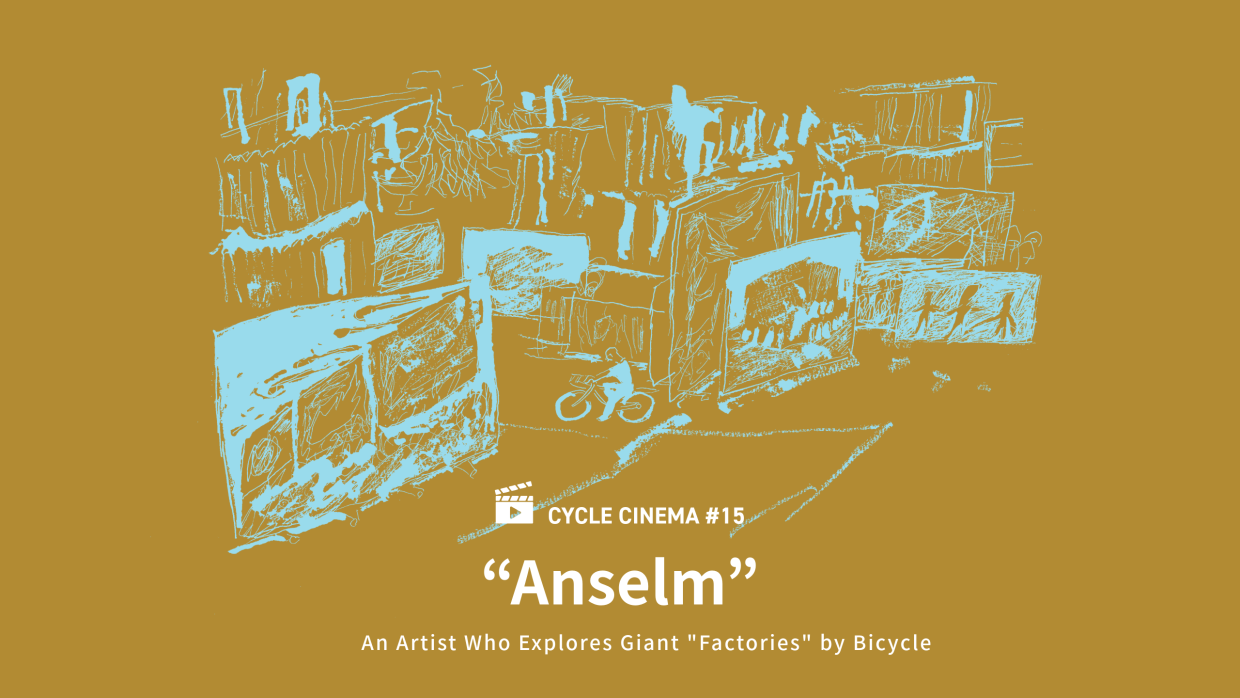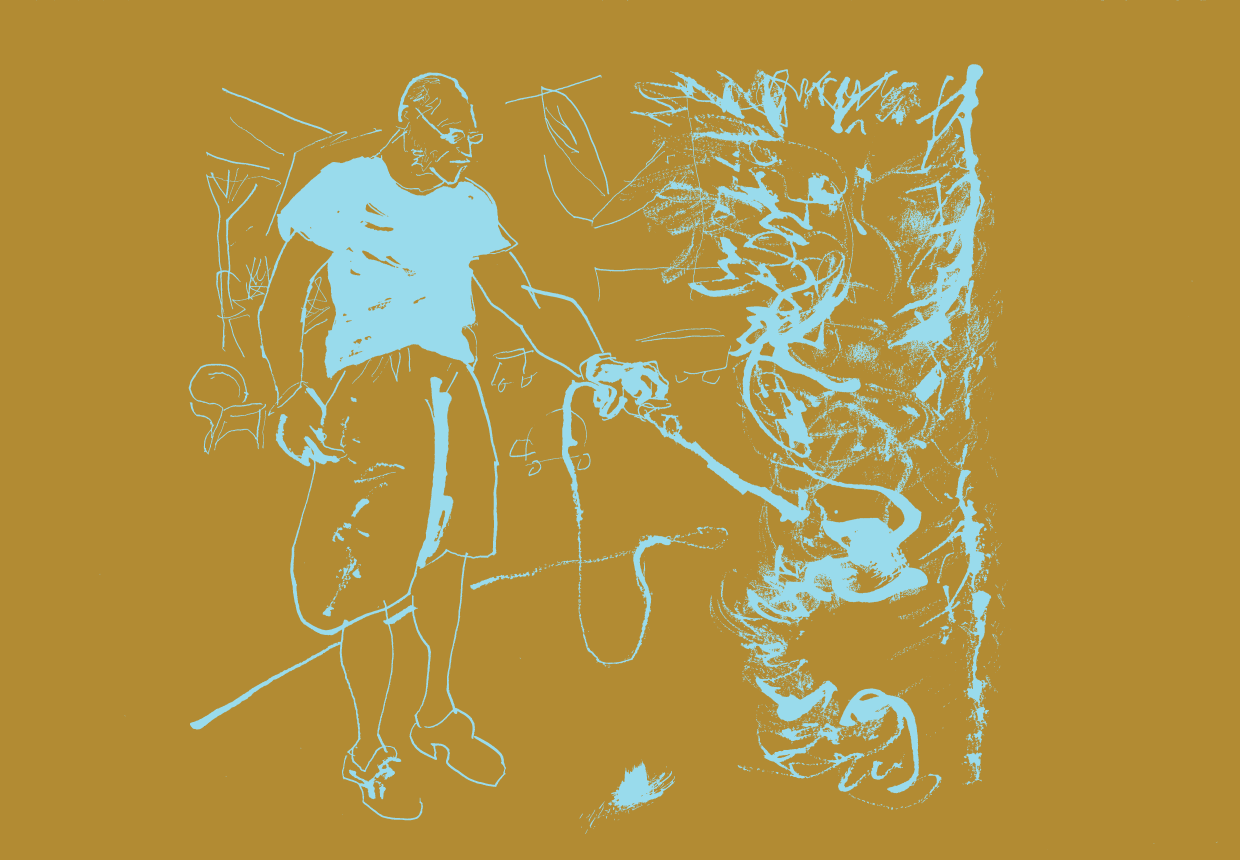
“The Zone of Interest”
A Bicycle Bridging Hell and Heaven

When you hear the words “painter” or “artist’s studio,” a certain image might come to mind: a chaotic desk cluttered with paintbrushes and tubes of paint, a large window flooding the room with sunlight, perhaps even a beautiful garden beyond. The film Anselm (2023), which depicts the German contemporary art giant Anselm Kiefer, takes the form of a documentary. However, it is directed by Wim Wenders—the renowned filmmaker behind Paris, Texas, Wings of Desire, and Perfect Days. In his hands, the film transcends a mere record of events, becoming a poetic visual experience where fact and fiction intertwine seamlessly.
Kiefer is one of Germany’s most prominent artists. His work, characterized by the use of unconventional materials such as sand, ash, and lead, delves into themes including German history, Nazism, war, Wagner, Greek mythology, and the Bible. Although he initially studied law at the University of Freiburg, he later turned to art, enrolling in the Karlsruhe Academy of Fine Arts in 1969. In 1970, he studied painting at the Düsseldorf Academy of Arts under Joseph Beuys, among others. Today, he is regarded as one of the most significant figures in contemporary art.
The film opens by introducing Kiefer’s studio, located in Barjac, a town in southern France. Originally a textile factory, the sheer scale of the studio is overwhelming. Materials and tools are stored on dedicated shelves, and forklifts navigate the expansive space to transport artworks. It is no exaggeration to call it a “factory.” His works are monumental, and the environment in which they are created is equally grand in scale. Within this vast studio, Kiefer moves from piece to piece on a bicycle. It is an arresting sight—he glides effortlessly, as if exploring a forest of his own imagination. The bicycle serves as a bridge, conveying both the immense scale of his works and the creative process behind them.
Wenders’ camera captures the depth and expanse of this space with stunning clarity: towering ceilings, walls lined with massive artworks, and colossal canvases stretched across the floor. As the bicycle wheels weave through the studio, they move with the precision and delicacy of a paintbrush.
Throughout the film, Kiefer is rarely shown holding a paintbrush. Instead, we see him working with industrial tools—gigantic gas burners, trowels, and buckets filled with molten lead. The scale of his works defies convention; pieces are transported by forklifts and carts, and heavy machinery is employed in their creation. Yet, no matter how large his works grow, they remain under the control of his will and hands. The bicycle, which allows him to navigate the studio freely, seems to symbolize this mastery. It is as if his creative process is embodied by his movement—an expression of his artistic autonomy.
By choosing the bicycle, the simplest mode of transportation, Kiefer appears to maintain his balance and perspective amid the complexity of his work and thoughts. He seems relaxed and at ease. Undoubtedly, the bicycle’s role extends beyond mere transportation—it serves as a medium that connects different areas of his expansive artistic space while also guiding the viewer’s gaze. Wenders’ camera, following Kiefer on his bicycle, organically links various parts of the studio, the stages of creation, and the finished works.
The rhythm of the bicycle pedals resonates with the film’s overall sense of time. Many of Kiefer’s works traverse temporal axes—memory, history, and mythology. His movement through the studio on a bicycle visualizes an artist capable of navigating these timelines freely. In one scene, a young Kiefer is shown riding a bicycle, echoing his present-day practice where bicycles also play a role in his work. When the film ends, the significance of the bicycle lingers, inviting the viewer to reflect. In doing so, Kiefer’s art feels both more intimate and more majestic.
Text_Hideki Inoue

🎬CYCLE CINEMA STORAGE🎬
#01 “The Bicycle Thief”
#02 “Project A”
#03 “Shoot for tomorrow!”(origin title “Butch Cassidy and the Sundance Kid”)
#04 “The Kid With a Bike (Le gamin au vélo)”
#05 “Izakaya Choji”
#06 “Cinema Paradiso”
#07 “Kids Return”
#08 “PERFECT DAYS”
#09 “Kramer vs. Kramer”
#10 “E.T.”
#11 “Gachi-Boshi”
#12 “Yesterday”
#13 “Wadjda”
#14 “The Zone of Interest”
#15 “Anselm”
#16 “Otoko wa Turai yo”
Profile

Text_Hideki Inoue
I am from Amagasaki City, Hyogo Prefecture, Japan. I work as a writer and editor. My hobbies include hot baths, skiing, and fishing. Although I have no personal connection, I am independently conducting research on Shiga Prefecture. I prefer an active fishing style called “RUN & GUN,” which involves moving around actively instead of staying in one place. Purchasing a car to transport bicycles for this style of cycling seems like putting the cart before the horse.
Illusutration_Michiharu Saotome
Post Date:2025.03.28